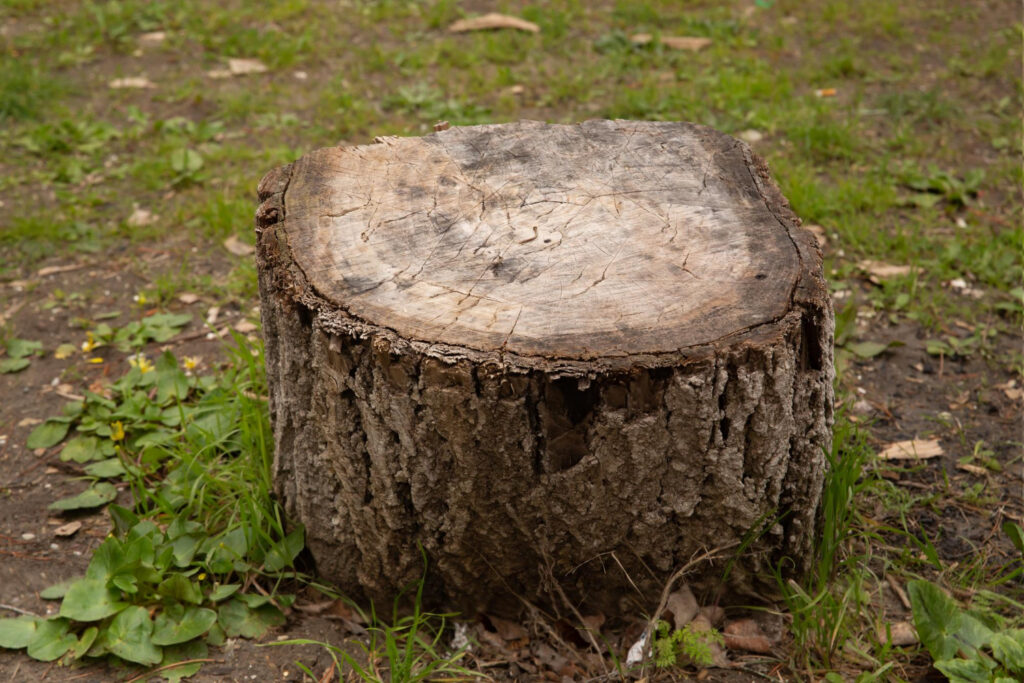Tree stumps can be an eyesore in your yard and even pose safety hazards. They take up valuable space where you could plant new trees, flowers, or even install a garden bench. Removing stumps is an essential step in maintaining a well-kept and safe yard. One effective technique for getting rid of tree stumps is stump grinding, which can make the process easier and more efficient.
Stump grinding involves using a machine to grind the stump down to just below ground level, turning it into small wood chips. This method is preferred over other stump removal techniques because it’s less invasive and leaves the surrounding area intact. Understanding stump grinding can help you decide if it’s the right solution for your yard’s needs.
In this guide, we will explore the basics of stump grinding, how it compares to other removal methods, and the detailed steps involved in the process. We’ll also cover post-grinding care to ensure your yard remains healthy and looks great. By the end of this article, you’ll have a comprehensive understanding of stump grinding and how it can benefit your outdoor space.
Understanding Stump Grinding: The Basics
Stump grinding is a method used to remove tree stumps by using a specialized machine called a stump grinder. This machine has a rotating cutting disk that chips away the wood of the stump and roots, turning them into small wood chips. The grinder works by grinding the stump down to just below ground level, making the area smooth and ready for reseeding or other landscaping activities.
One of the main benefits of stump grinding is that it is less invasive than other removal methods. Unlike digging out a stump, which can create a large hole and disturb the surrounding area, stump grinding targets only the stump and immediate roots. This minimizes damage to the larger landscape and leaves the area looking neat and tidy.
Safety is another important aspect of stump grinding. Using the correct equipment and techniques ensures the stump is removed safely without harming people or property. It is crucial to understand how to operate a stump grinder properly or hire a professional to handle the task. Proper safety gear, including gloves, goggles, and ear protection, should always be used when performing stump grinding.
Benefits of Stump Grinding vs. Stump Removal
Deciding between stump grinding and stump removal depends on several factors, including the size of the stump, the location, and the intended future use of the area. Here are some key benefits of choosing stump grinding over traditional stump removal.
1. Less Invasive: Stump grinding is a less invasive process compared to stump removal, which often involves digging out the entire stump along with its roots. This can create a large hole and significantly disturb the landscape, requiring additional work to fill and reseed the area.
2. Efficiency: Stump grinding is typically quicker and more efficient than other removal methods. It can be completed in a shorter amount of time, especially for larger stumps, making it a more convenient option for homeowners looking to clear their yard promptly.
3. Cost-Effective: Since stump grinding is less labor-intensive, it often costs less than full stump removal. There is no need to deal with the extra soil displacement and landscape repair, which can add to the overall expense.
4. Aesthetics: Grinding the stump leaves the area looking cleaner and more aesthetically pleasing. The remaining wood chips can be used as mulch or easily removed, allowing for immediate planting or landscape design.
5. Environmental Impact: Stump grinding is more environmentally friendly as it avoids the need for harsh chemicals sometimes used in stump rotting processes. The ground-up wood chips can be repurposed as mulch, adding nutrients back into the soil.
Understanding these benefits helps in making an informed decision about the best method for removing a tree stump in your yard. Choosing stump grinding can save time, money, and effort while ensuring the job is done effectively.
Step-by-Step Process of Stump Grinding
Stump grinding involves several steps to ensure the stump is efficiently removed and the area is left clean. Here’s a detailed look at the process:
1. Preparation: Before starting, clear the area around the stump of any rocks, debris, or obstacles that could interfere with the grinding. Make sure to check for underground utilities to avoid damaging them during the process. It’s also essential to wear protective gear like goggles, ear protection, and gloves for safety.
2. Positioning the Grinder: Place the stump grinder close to the stump. Ensure the grinder’s cutting wheel is positioned slightly over the edge of the stump. Start the grinder and lower the cutting wheel onto the stump.
3. Grinding the Stump: Move the grinder from side to side, gradually lowering the cutting wheel deeper into the stump. Continue this motion until you grind the stump down to a few inches below the ground level. Depending on the size of the stump, this process may take several passes.
4. Dealing with Roots: After grinding the main stump, move the grinder to the exposed roots. Follow the same side-to-side motion to grind down the roots that were connected to the stump.
5. Clean Up: Once the grinding is complete, you’ll be left with a pile of wood chips and debris. These can be used as mulch in your garden or removed from the site. Rake the area to smooth out any uneven soil and fill in the hole with topsoil if necessary.
Post-Grinding Care: What to Do After the Stump is Gone
Once the stump is ground down, proper care ensures the area stays healthy and ready for future use. Here are important steps to take after stump grinding:
1. Remove Wood Chips: The grinding process leaves behind a significant amount of wood chips. While they can serve as mulch, you may need to remove some to prevent excessive build-up. Removing excess chips ensures the soil stays balanced and ready for new plantings.
2. Fill the Hole: After removing the wood chips, fill the hole left by the stump with topsoil. This helps prevent sinking and creates a smooth, even surface. Tamp down the soil to eliminate air pockets and ensure stability.
3. Reseeding or Planting: If you plan to grow grass or plant new vegetation, reseed the area immediately after filling the hole. Choose grass seed or plants that are suitable for your local climate and soil conditions. Water the newly seeded or planted area regularly to encourage healthy growth.
4. Monitor for Settling: Over time, the soil where the stump was removed may settle. Check the area periodically and add more soil if needed to keep it level. This prevents low spots that can collect water and create drainage issues.
Final Thoughts
Stump grinding is a highly effective method for removing tree stumps and making your yard look neat and tidy. It is less invasive and more environmentally friendly than other stump removal techniques. By following the proper steps and post-grinding care, you can ensure the area remains healthy and ready for new landscaping projects.
If you’re ready to reclaim your yard from unsightly stumps, One Two Tree is here to help. Contact One Two Tree for expert stump grinding services and turn your outdoor space into a pristine and usable area. Enjoy the benefits of a beautifully maintained yard by removing those old stumps safely and efficiently.

